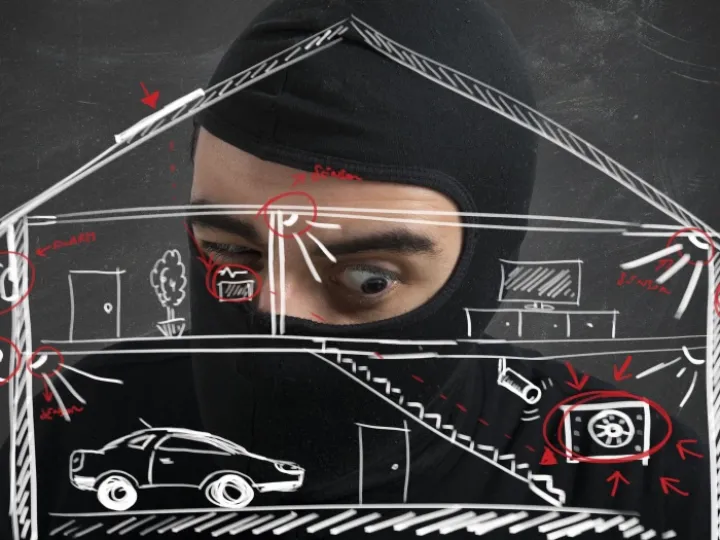Making sense of security alarm sensors
Sensors form the heart of any intruder alarm system, so it's helpful to know just a little about why they are used and how they work.
Two types of sensors are usually incorporated into any burglar alarm system: active sensors and passive sensors.
Although the purpose of different systems is the same – to detect intruders in the home, office or business – each sensor adopts a different technology.
Active sensors work by sending out a signal and detecting any interference within the designated area, while passive sensors will detect energy variations in the surrounding area.
Whatever sensor you choose, it is probably best to have a professional install motion sensor equipment in your home or business premises.
A qualified engineer will know how to mount sensors at the most effective locations and in the most efficient way.
Always remember that no motion detector system is perfect. All are prone to errors and can trigger false alarms, although modern technological advances mean these are far fewer than they once were.
Motion sensors remain essential to any intruder alarm system and should be chosen carefully to ensure real security at home or work.
Passive Infrared (PIR)
One of the most common motion detectors in burglar alarm systems is the Passive Infrared or PIR detector. It works by detecting body heat. Once activated, the PIR system uses the heat signature of the surrounding area against a baseline 'grid'. If a moving body blocks too many zones in the grid, the infrared levels will change rapidly, and the sensor will be tripped. PIR sensors have become very efficient in recent years. They are cheap and reliable, but they are only good at detecting motion in relatively small areas.
Microwave Sensors (MW)
The most common active sensor system sends out microwave pulses and, a little like radar, it measures the reflections that bounce back from the surroundings. Unlike PIR sensors, microwave sensors can cover large areas. Still, they are more expensive to install, and they are more vulnerable to interference.
Dual Purpose Sensors
Many motion sensors now combine PIR and MW. The advantage is that each uses different wavelengths, so they don't interfere with each other. Dual sensors provide a 'complete' field cover and are less likely to be tripped by false alarms as both sensors need to be triggered before the alarm sounds.
Other types of sensors
Although PIR and MW are the most popular types of motion sensors, they are not the only ones. Ultrasonic sensors can emit pulses of sound outside the normal range of hearing. Sensors can detect movement by detecting any changes in the time for a pulse to echo back to the device. Vibration sensors activate when they detect vibrations in the alarm itself. Although useful, they do tend to trigger false alarms. LED motion sensors use active rather than passive infrared. They emit infrared rays and measure the reflection off any moving object.
Using motion sensors
Motion sensors are the primary devices used to detect when an intruder has entered your home or business. It may use single or multiple technologies to detect movement and, if tripped, send a signal to the security system's control panel. The control panel usually connects to the monitoring centre. It then reacts accordingly by sounding an audible or visual alarm, alerting named keyholders by phone or over the internet, or signalling a monitoring centre or any combination of these.
Alarm system sensors can be manually activated as you leave home or work, can be set to switch on or off at prescribed times or activated remotely from a mobile phone or over the internet. Some security systems can be programmed to record unusual events with a camera once the motion is detected. Images can be viewed in real-time by mobile phone, and they can be recorded for later use. Motion sensors can have other purposes besides alerting the homeowner to any intruders. They can also:
Alert you to the opening of doors or windows even when at home.
Trigger a doorbell as a visitor opens a gate or approaches a door.
Alert you to activity within restricted areas of your home or workplace, such as cabinets housing expensive items or workshops with dangerous equipment.
Help to save energy by switching off lights or heaters when rooms are unoccupied for specified periods.
Alert you to pet or animal movement in the house or garden.
More about alarm systems
Intruder alarms and home automation
Make regular checks on alarm systems
Take steps to protect your business
Quick Links
Small Print
NSI Gold / Privacy PolicyAccreditations

Burglar alarms & security systems for the Midlands, the North West & North Wales

